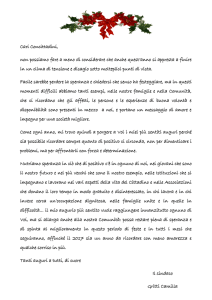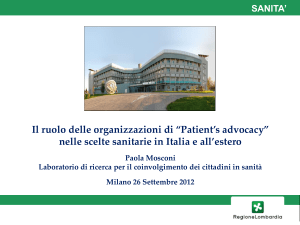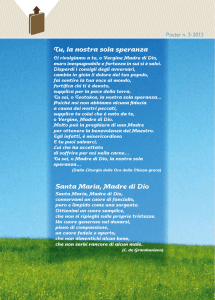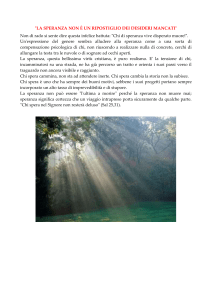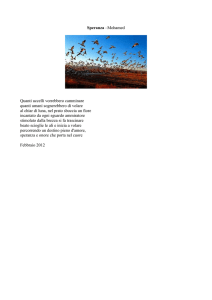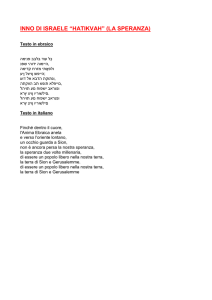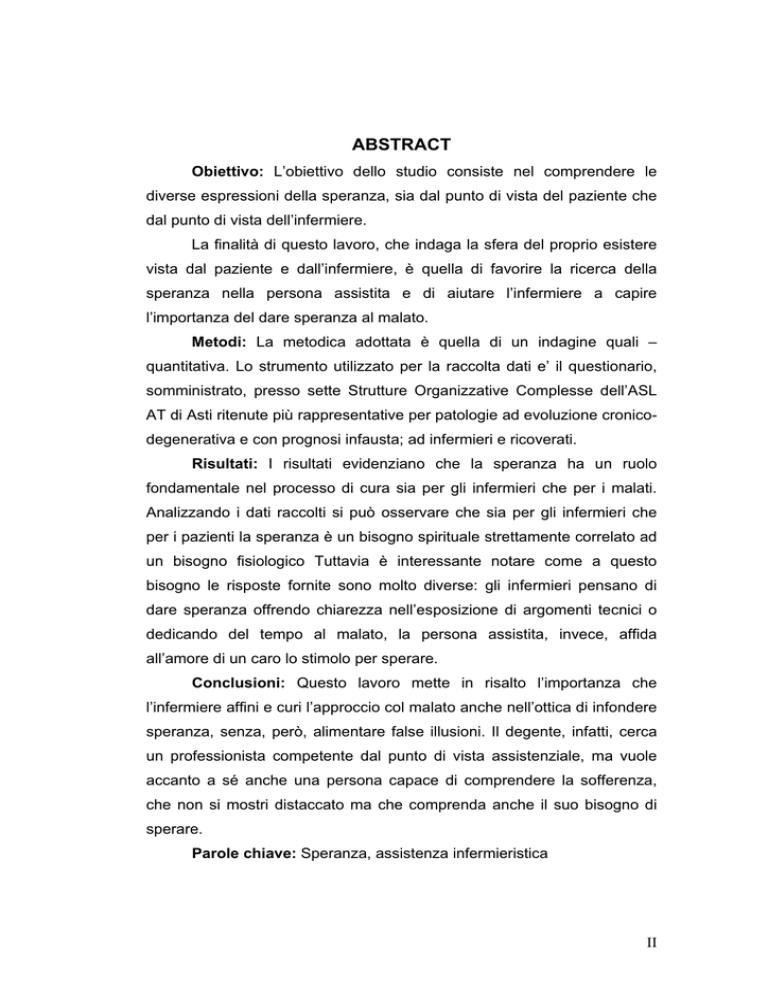
ABSTRACT
Obiettivo: L’obiettivo dello studio consiste nel comprendere le
diverse espressioni della speranza, sia dal punto di vista del paziente che
dal punto di vista dell’infermiere.
La finalità di questo lavoro, che indaga la sfera del proprio esistere
vista dal paziente e dall’infermiere, è quella di favorire la ricerca della
speranza nella persona assistita e di aiutare l’infermiere a capire
l’importanza del dare speranza al malato.
Metodi: La metodica adottata è quella di un indagine quali –
quantitativa. Lo strumento utilizzato per la raccolta dati e’ il questionario,
somministrato, presso sette Strutture Organizzative Complesse dell’ASL
AT di Asti ritenute più rappresentative per patologie ad evoluzione cronicodegenerativa e con prognosi infausta; ad infermieri e ricoverati.
Risultati: I risultati evidenziano che la speranza ha un ruolo
fondamentale nel processo di cura sia per gli infermieri che per i malati.
Analizzando i dati raccolti si può osservare che sia per gli infermieri che
per i pazienti la speranza è un bisogno spirituale strettamente correlato ad
un bisogno fisiologico Tuttavia è interessante notare come a questo
bisogno le risposte fornite sono molto diverse: gli infermieri pensano di
dare speranza offrendo chiarezza nell’esposizione di argomenti tecnici o
dedicando del tempo al malato, la persona assistita, invece, affida
all’amore di un caro lo stimolo per sperare.
Conclusioni: Questo lavoro mette in risalto l’importanza che
l’infermiere affini e curi l’approccio col malato anche nell’ottica di infondere
speranza, senza, però, alimentare false illusioni. Il degente, infatti, cerca
un professionista competente dal punto di vista assistenziale, ma vuole
accanto a sé anche una persona capace di comprendere la sofferenza,
che non si mostri distaccato ma che comprenda anche il suo bisogno di
sperare.
Parole chiave: Speranza, assistenza infermieristica
II
ABSTRACT
Objective: this dissertation objective consists of understanding
different hope expressions, either for the patient or the nurse.
This work purpose, that inquires about patient’s and nurse’s own
existence, is to foster the research of the hope in the patient and to help
the nurse to realize how much it’s important offering hope to the patient.
Working methods: chosen methodology follows a qualitative and
quantitative investigation. Instrument employed to collect data is the
questionnaire, delivered to seven SOC – Complex Organizational
Structures – of Asti’s ASL, considered most representative for chronicdegenerative disease and unfavourable prognosis, given to the nurses
and the patients.
Results: results higlight that hope has a fundamental role in the
care process either for nurses or patients.
Analyzing collected data it’s possible to observe that both nurses and
patients regard hope like a spiritual need strictly correleted with a
physiological need. However it is worth noting that there’re few different
answers: nurses think about hope offering technical information with
clearness or devoting their time to the patient, but sick person, instead,
entrusts hope stimulus to his dear ones love.
Conclusions: this work points out the importance that nurse refines
and pays attention to the overtures to the patient instilling hope, without,
nevertheless, feeding false illusions.
In-patient, really, looks for a qualified professional man for the
coverage, but he wants near him a person who can understand his pain,
who doesn’t show indifference but knows his hope need too.
Key words: hope, nursing care
III


